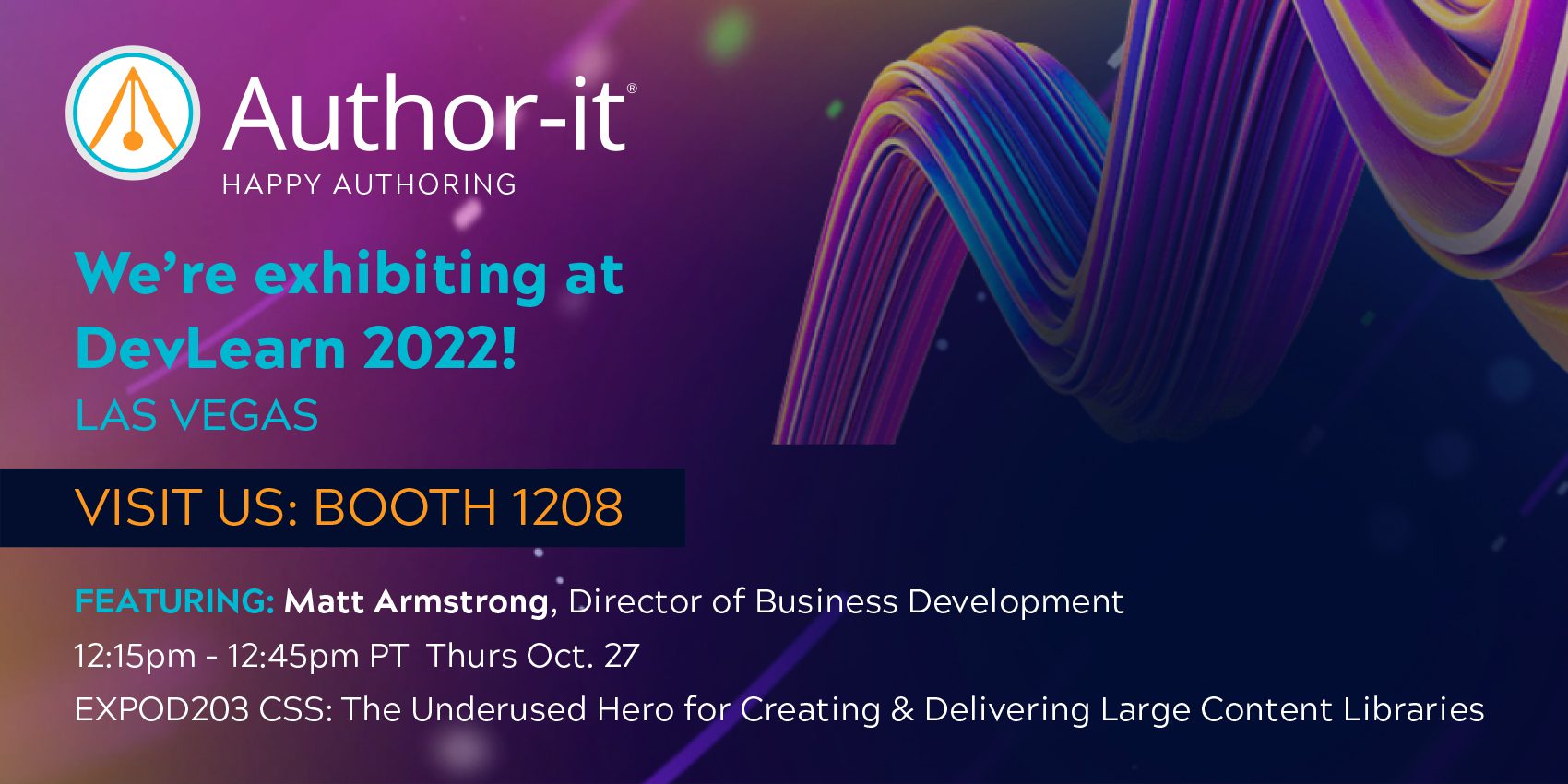Author-it attends DevLearn in Las Vegas Oct. 26-28


Author-it Software Corporation is delighted to be attending the DevLearn Conference & Expo in Las Vegas from October 26-28! Visit us at booth #1208.
Author-it’s Director of Business Development, Matt Armstrong, will present
CSS: The Underused Hero for Creating and Delivering Large Content Libraries
at EXPOD203 on Thursday, Oct. 27 from 12:25 – 12:45pm.
Matt Armstrong has been working with organizations in the USA, Asia, and Europe for almost two decades, helping them streamline content development practices to support operational improvements, revenue growth, and customer satisfaction.


This session is designed for professionals in training organizations who create and maintain a large library of content and are looking to improve management of this valuable asset. The examples used are from Author-it clients and are applicable to any organization.
All organizations with a library of training content regularly face a few complex and time-consuming technical tasks for maintenance of their training content library including re-engineering core functionality of their eLearning courses and presentations; updating colors, fonts, logos and other thematic elements as the company re-brands; or simply looking for opportunities to improve the performance of courses and presentations across a range of devices.
In this session we will use a case study to review how generic web technologies and techniques adopted from software development practices allow fundamental eLearning functionality to be completely re-engineered in parallel with ongoing training content development without impacting delivery or requiring software developers. This session includes an overview of software application development best practices that are directly and easily applicable to eLearning content development, especially in organizations that have large training libraries and a range of SME and other contributors to the content workflow.
We will review before and after samples of the eLearning itself, and discuss how the generic CSS technology allows for significant eLearning functionality to be inserted into the presentation layer (web browser) rather than hardcoded into the course or content itself, allowing for faster and cheaper changes at scale. This part of the conversation includes what skills are required for these changes, how to acquire them, and how these new skills improve the versatility of training professionals to create change elsewhere in their organization.


